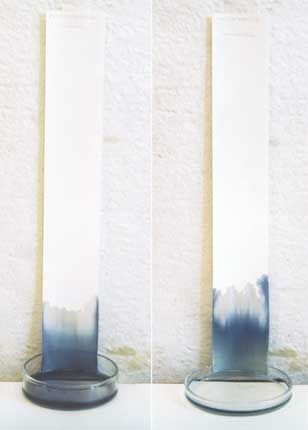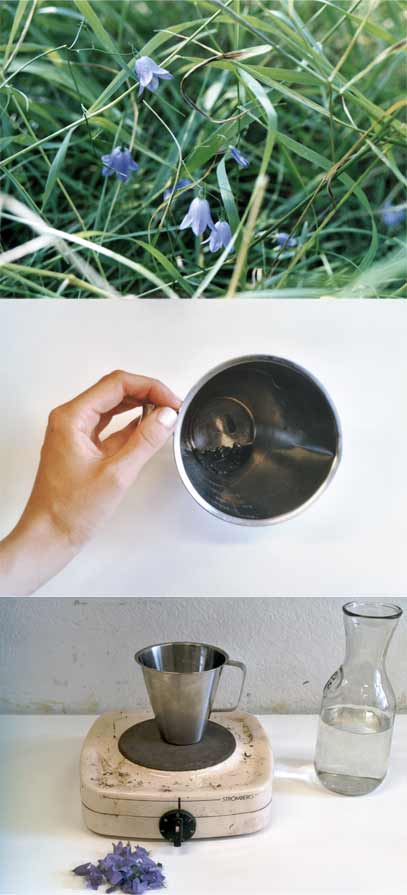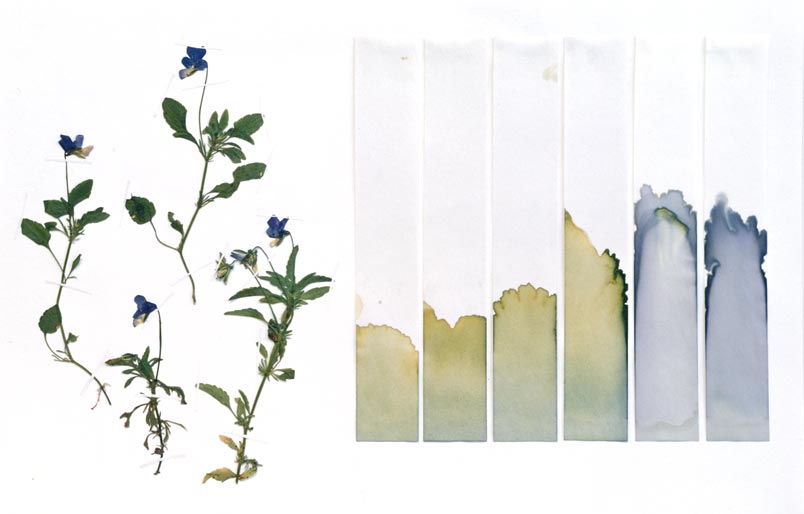Chromatograms
Chromatography is a separation method whereby individual chemical compounds present in the mixture are resolved from each other. The discovery of adsorption chromatography
is credited to Mikhail Tswett, a Russian
botanist. At the beginning of the twentieth century Tswett employed the method to separate
different colour components from green leafs.
I have used simple paper chromatography to separate pigments present in the colours of flowers. During the summers of 2000 and 2001 I collected more than one hundred specimens of local wild flora on the island of Harakka just off the coast of Helsinki.
The work consists of eighty herbarium sheets with chromatograms and dried plant specimen,
a light table with a collection of petri dishes and a video documenting the chromatographic
process. The shallow glass bowls contain coloured residues of the various
plant extracts. On the video three hours of pigment separation is shown speeded up to four minutes.
Just like a flowering meadow, the herbarium with chromatograms is fugitive. Some of the colours start changing during the drying process,
whereas the others disappear during a longer period of time. Also the colours impregnated
in the filter paper fade away quickly and the work gradually lost its colour even during the exposition.


See other images of the project:
